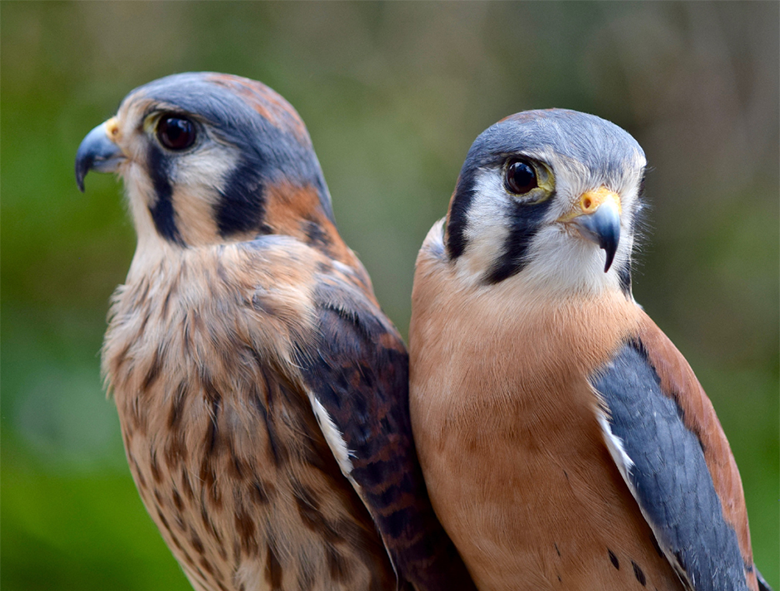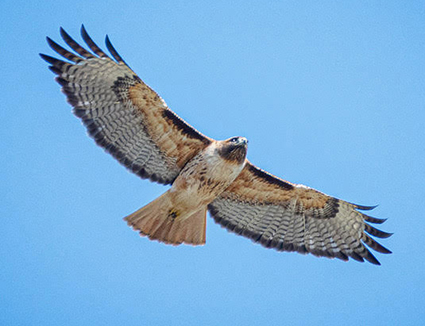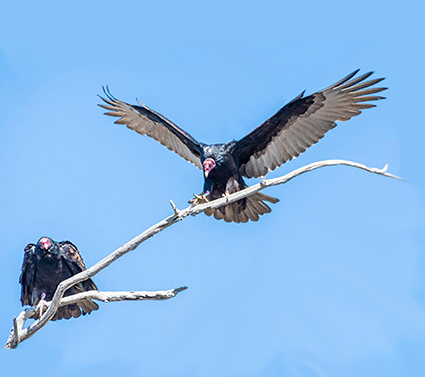Support Urban Forest Raptor Habitat
The Urban Forest and adjacent, protected Raptor Foraging Area provide vital habitat for several raptors, also called birds of prey. The American Kestrel, Red-tailed Hawk and Turkey Vulture shown here are among the more common species observed hunting, nesting and dining.
How are Raptors beneficial?
Hawks and American Kestrels help to balance the food chain by eating fast-reproducing rodents and insects that could otherwise devastate ecosystems. Vultures are on nature’s clean-up crew. They rid the landscape of deteriorating carcasses and help stop the spread of dangerous diseases and bacteria.
 “The American Kestrel is our smallest, most abundant, and most vibrantly colorful Falcon. Watch for their dramatic aerial show of slow hovering mid-air facing into the wind, flapping and adjusting their long tails to stay in place before rapidly diving to seize unwitting prey in their powerful talons.” – Expert Birder Betty Kanne |
AMERICAN KESTREL
|
 Watch for Red-tailed Hawks soaring above the Urban Forest and perched in the taller trees and snags (dead trees). They are the most common bird of prey observed above roadsides throughout North America. Photo by James Kendall |
RED-TAILED HAWK
|
 “Turkey Vultures can live 20 years or more and congregate nightly to sleep in large communal roosts. In the early morning hours you may see them sunbathing in a tree with their wings spread out to increase their body temperature after a cool night.” – birder Betty Kanne, Bird Watching in the Urban Forest, Photo by James Kendall |
TURKEY VULTURE
|
Thank you to contributing writer and Eagle Scout candidate Aidan Jardine. Discover more about the nearly 100 bird species observed in recent months in the HB Urban Forest on our Birds and Birders in the Urban Forest page.
Thank you for visiting, & please donate to the HB Tree Society for more forestation and habitat restoration.
